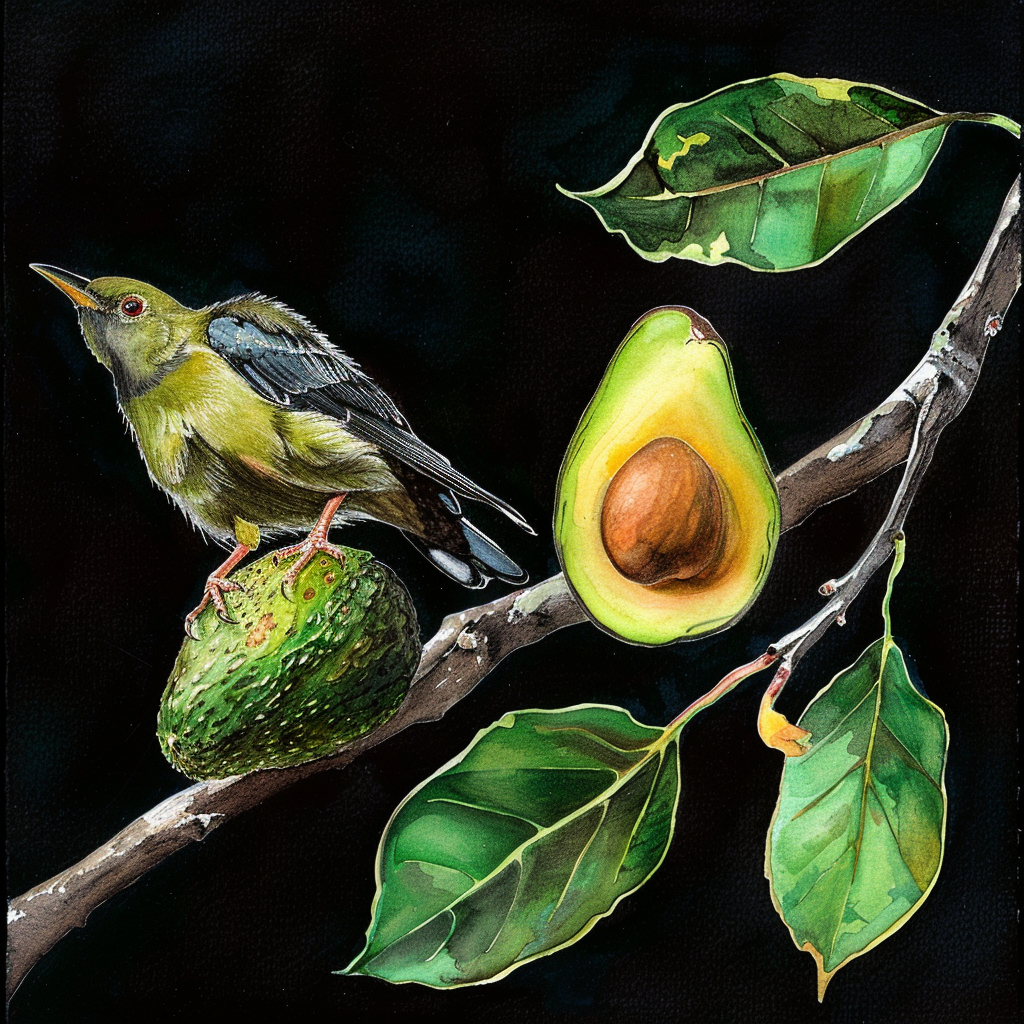Avocado leaves, typically prized for their lush greenery and association with the beloved avocado fruit, hold a lesser-known attribute that has raised concerns within the avian world. The leaves of the avocado tree contain a compound called persin, which can be toxic to various types of birds. While persin’s effects on mammals are relatively well-documented, its impact on avian species underscores the complexity of plant-animal interactions and the importance of understanding potential hazards.
The Toxic Component: Persin
Persin, found in various parts of the avocado tree, is a fungicidal compound. It serves as a natural defense mechanism against certain pathogens. While humans typically tolerate persin well, other animals, including birds, may not share the same resilience.
Avocado Leaves and Bird Sensitivity
The avian community is not uniformly affected by avocado leaf toxicity. While many bird species have evolved mechanisms to detect and avoid potentially harmful substances, there are variations in their sensitivity to persin. Some bird species show resistance to the toxic effects of persin due to differences in their metabolism and feeding habits.
Symptoms and Severity
When birds consume avocado leaves, the results can range from mild digestive distress to severe toxicity, depending on factors such as the species of bird and the quantity ingested. Gastrointestinal symptoms, including vomiting and diarrhea, are common early indicators. In more serious cases, birds may experience respiratory difficulties, weakness, lethargy, and, tragically, even death.
Natural Aversion in the Wild
While it’s important to recognize the potential dangers of avocado leaves to birds, it’s equally crucial to acknowledge the behavioral mechanisms that minimize the risk. In their natural habitats, many birds have developed aversions to bitter-tasting or potentially toxic plants. The bitter taste of avocado leaves, attributed to the presence of persin, serves as a deterrent to most birds, preventing them from consuming these leaves in significant quantities.
Domestic and Urban Considerations
The concern regarding avocado leaf toxicity to birds becomes more relevant in domestic and urban settings where avocado trees are cultivated for ornamental purposes. Here, the limited dietary options for some bird species might lead them to interact with avocado leaves more frequently than their wild counterparts. However, even in these settings, cases of serious toxicity remain relatively uncommon due to the birds’ inherent aversion to the leaves.
Responsible Practices
For those who have pet birds or are passionate about avian conservation, it’s advisable to take precautions to prevent potential exposure to avocado leaves:
1. Education: Familiarize yourself with the avian species in your environment and their typical behaviors. Understanding which species might be more sensitive to avocado leaves can help you make informed decisions.
2. Avocado Management: If you’re cultivating avocado trees in areas frequented by birds, consider methods to limit bird access to the leaves. Employing physical barriers or planting other bird-friendly plants can help divert their attention away from avocado foliage.
3. Pet Care: If you have pet birds, ensure they are not exposed to avocado leaves or any other parts of the avocado tree. Adhere to a recommended avian diet to promote their well-being.
4. Response to Symptoms: Should you notice any unusual behavior or health issues in wild birds or your pet bird, consult avian experts or veterinarians who can provide appropriate care.
While it’s true that avocado leaves can be toxic to certain types of birds, the natural avoidance behaviors of most avian species play a significant role in minimizing the risk of exposure. The intricate interactions between plants and animals serve as a reminder that nature’s intricacies are vast and multifaceted. By understanding the nuances of these interactions, we can better appreciate the dynamic relationships that shape our world and ensure the well-being of all its inhabitants.
